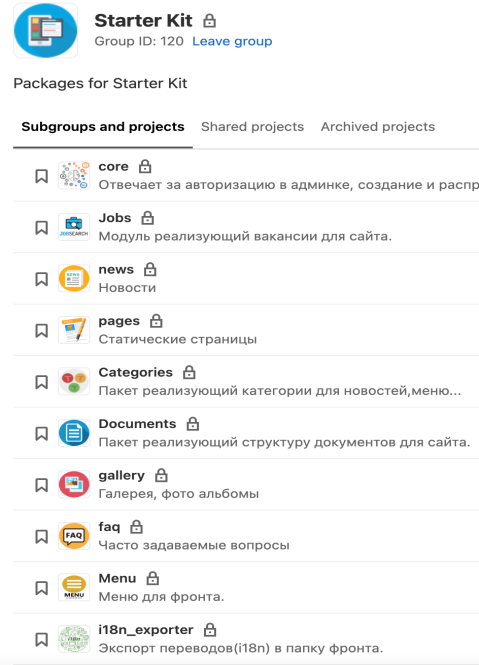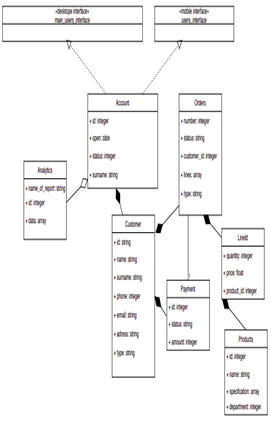Дата публикации: 20.04.2022
Nursultan Serikbay
Faculty of Information Technologies
International Information Technology University
Almaty, Kazakhstan
Abstract. The rapid spread of technology, accelerated by the pandemic, has led to an urgent need to adapt the world's small and medium-sized businesses. The article identifies key features of the development and application of technology in the new realities for small and medium-sized businesses, based on the fact that technology can become an absolute boon for society if small and medium-sized businesses, as well as the government, prepare and adapt them. With the right joint steps, they can build a new future, using the crisis as a period of new opportunities. The main ways of understanding the concepts of the concept of universal digitalization are also considered.
In addition to theoretical work, a StarterKIT of application software packages is being created that will be able to meet the needs of companies with small revenue. At the same time, the UML modeling language is used to clearly show the system being designed. For the development of the system itself, modern technologies such as the Cuba Platform, React, Flutter, Docker are used.
Keywords: Digitalization, CRM system, automation, sales, transformation, cross-platform application.
I.INTRODUCTION
The relevance of this work is related to the current situation in the country and in the world, which stimulated the processes of digitalization in both medium and small businesses. In the conditions caused by the pandemic, the economy began to actively transform, the digital economy gained more importance, which caused many changes in the structure of organizations.
Digitalization is a business transformation involving the use of modern digital technologies to accelerate sales and increase the level of interaction with customers, as well as increase growth and productivity and other types of internal business processes.
Digital transformation is radically changing the global business landscape. Business leaders in almost all industries are using key levers of digital transformation, including social platforms, mobility, cloud and analytics, to increase productivity and customer reach for their business. Adopting and using such disruptive technologies at the right time and in the right place allows organizations to increase business flexibility, improve customer service and identify new business opportunities [1].
In the modern world, many company executives realize the need for changes in their business and develop their business strategies and goals, models, production processes, marketing approaches, etc. through digital transformations.
As digital transformations develop, companies in all industries face fierce competition. As a rule, in order to always be competitive and survive in the market, companies pay attention to key business processes, since it is the improvement of these processes that brings companies more revenue and allows them to expand the pool of customers, meet their needs.
The novelty of the project lies in the fact that at the moment there is no high-quality and easy-to-implement product on the market that would automate the business processes of small and medium-sized businesses with low revenue for a wide range of tasks.
II.DEVELOPMENT OF STARTER KIT APPLICATION SOFTWARE PACKAGES
In today's rapidly developing realities, regardless of the scale of business, companies face a large amount of information every day, process and control, which is manually time-consuming. Significantly increase the productivity of information processing and process automation allows developments in the field of optimization of company processes. For each process of work in the company, there are various systems, the implementation of which extols effective interaction, increasing the efficiency and quality of decision-making, reducing the likelihood of managerial errors. Not a small market share is occupied by CRM systems, software designed to automate customer interaction, which helps businesses build relationships with customers and increase sales and improve customer service.
CRM is also a business concept aimed at a good knowledge of your client, establishing successful relationships with the client and improving the quality of customer service, which should ultimately lead to an increase in the company's competitive advantages, increase profits and optimize the company's activities as a whole. [2]
Currently, the most popular CRM systems in the world are: Bitrix24, Oracle Siebel, SAP, which provides ready-made CRM system solutions. But small and medium-sized businesses cannot afford the license of these systems. For example, the cost of implementing SAP starts from $ 400,000, and the implementation period will be from 7-8 to 9-12 months. The goal of my dissertation is to develop StarterKit application software packages that will be able to meet the needs of companies with small revenue.
Starter kit - Core package and other packages are designed primarily for reusing this or that functionality in various projects. In addition, packages are designed in such a way that they can be extended to fit the requirements of the project. Starter Kit packages not only allow you to collect, store and work with customer information, but also allow you to automate routine processes in the company. For example, automatically generate reports based on data from the CRM system. These can be contracts, invoices, acts, commercial offers, customer reports. Also plan meetings and calls, sending messages by mail or SMS.
 To date, many starter kit packages have been implemented and are in the public domain. And many projects have been implemented very easily with these packages. Below is a list of released packages:
To date, many starter kit packages have been implemented and are in the public domain. And many projects have been implemented very easily with these packages. Below is a list of released packages:
Fig 1.Implemented StarterKit packages
StarterKit was conceived and implemented for:
1. In order to carry the underlying functionality that is used from project to project. This is very convenient when a developer can install any of the above packages into his project and change them to fit his needs by executing just a couple of commands.
2. Rapid development and implementation of project requirements.
3. Standardization of the backend interface development process. I constantly develop and improve standards, write regulations, create infrastructure, constantly motivate colleagues to use standard solutions, control their correct understanding and application.
4. For quick adaptation of new developers. So that other developers who know the principles of the Starter Kit can quickly get involved in the project.
III. Building a StarterKit system model

Fig 2. CRM System Class Diagram
This diagram (Fig. 1) shows the interfaces and classes of the implemented CRM system for the internal client. The system includes a web and front-end and a cross-platform mobile application (API) implemented through web languages.
• Account - Responsible for authorization in the admin panel, creation and distribution of rights, password recovery, etc.
• Customer - A module that implements customer interaction management.
• Documents - A module that implements the structure of documents for the site and the formation of accounting documents, preparation of commercial proposals.
• Analytics - works with all available data, as well as analyzes the behavior of an external client and suggests corrective actions on the part of an internal employee.
• Products - A module that implements work with data on which section the product belongs to, what is its value and to which section it belongs.
• Clients - A module that implements customer orders and their statuses, that is, data on whether refunds have been made, whether the customer has paid for the order, etc.
• Planning - A module that implements meetings and calls with clients.
• Payment - A package that implements making payments via Epay.
IV. Conclusion
Digitalization of business is one of the main trends in economic development and is gradually being implemented in all spheres of life. External economic factors, such as the pandemic, have only accelerated this process. SMBs that haven't started this transformation process are reducing their opportunities for effective collaboration and business success in the future, as the rules of the game won't change. If everything is done correctly, the companies that built their business processes will make a powerful breakthrough and will be more resistant to any circumstances. Simply put, organizations must have a digital presence to remain relevant to customers and competitive in the marketplace. The practical work done to create an open-source StarterKit system will allow companies with small revenues to use a tool for analyzing and processing client data.
REFERENCES
[1] Rogers D. Digital transformation. - Moscow: AITEKO, 2017. - 344 p.
[2] Fedorova G. Digital economy // Strategy. – 2017. – № 3 (28). – Pp. 86-87.
[3] Shlychkov V., Kiyamov I., Kulish S., Nestulaeva D., Alafuzov I. Modern Practice of «manual Management» in Russian Governmental and Municipal Authority // Journal of Advanced Research in Law and Economics. - 2017. - Vol. 8. No. 7. - pp. 2241-2252.
[4] Shlychkov V.V., Bataykin P.A., Nestulaeva D.R., Kulish S.M. Small and Medium Business in the Republic of Tatarstan: Obstacles to Development // Espacios. - 2020. - Vol. 41 (24). - p. 117-128.
[5] Vylegzhanina A.O. CRM systems: textbook / Moscow, Berlin: Direct-Media, 2016. - 99 s
[6] Standardization of the company's business processes - purpose and Application: edited by V.V. Lev // Electron. dan. URL access mode: https://bank-explorer.ru/optimizaciyaprocessov/standartizaciya-processov.html (accessed 04.11.2018)
[7] Leshchev V. A. Efficiency of CRM system application // Molodoy scientist. - 2016. - No. 12. - pp. 165-168.
[8] Gruzdenko P.The relevance of the introduction of CRM systems into the practice of Russian companies // Derzhavin readings: materials of the XXII All-Russian Scientific Conference / Tambov: Tambov State University named after G.R. Derzhavin, 2017— - 90-96 p.
[9] Vylegzhanina A.O. CRM systems: textbook / Moscow, Berlin: Direct-Media, 2016. - 99 p.
[10] Standardization of the company's business processes - purpose and application: edited by V.V. Lev // Electron. dan. URL access mode: https://bank-explorer.ru/optimizaciya - processov/standartizaciya-processov.html (accessed 04.11.2018)
[11] Weil P., Vorne S. Digital transformation of business: changing the business model for
the organization of a new generation. - M.: Alpina Publisher, 2019. - 257 p.
[12] Shlychkov V.V., Khasanova A.S., Kiyamov I.K., Kulish S.M., Nestulaeva D.R. Hands-On
Management: Theoretical and Methodological Approaches And Russian Practice of State and
Municipal Management // European Research Studies Journal. - 2017. - Vol. 20. No. 2B. - pp. 200-
223.
[13] Shlychkov V.V., Bataykin P.A., Nestulaeva D.R., Kulish S.M. Small business in the Republic of Tatarstan - declarations and reality // Bulletin of Economics, Law and Sociology.
- 2018. - No. 1. - pp. 46-53.
[14] Deloitte. Digital Education Survey. [Electronic resource] // URL: https://www2.deloitte.com/content/dam/Deloitte/us/Documents/technology-media-telecommunications/us-tmt-digital-education-survey.pdf (accessed 12.03.2020).
[15] IBM Institute for Business Value. The Coming AI Revolution in Retail and Consumer Products, 2019. [Electronic resource] // URL: https://www.ibm.com/downloads/cas/NDE0G4LA (accessed 12.03.2020).
[16] UNCTAD. Digital Economy Report, 2019. Value Creation and Capture: Implications for Developing Countries. United Nations, 2019. [Electronic resource] // URL: https://unctad . org/en/PublicationsLibrary/der2019_en.pdf (accessed 12.03.2020).
[17] McKinsey Global Institute. Twenty-Five Years of Digitalization: Ten Insights How to Play it Right. 2019. [Electronic resource] // URL: https://www.mckinsey.com /~/media/ (accessed 12.02.2020).
